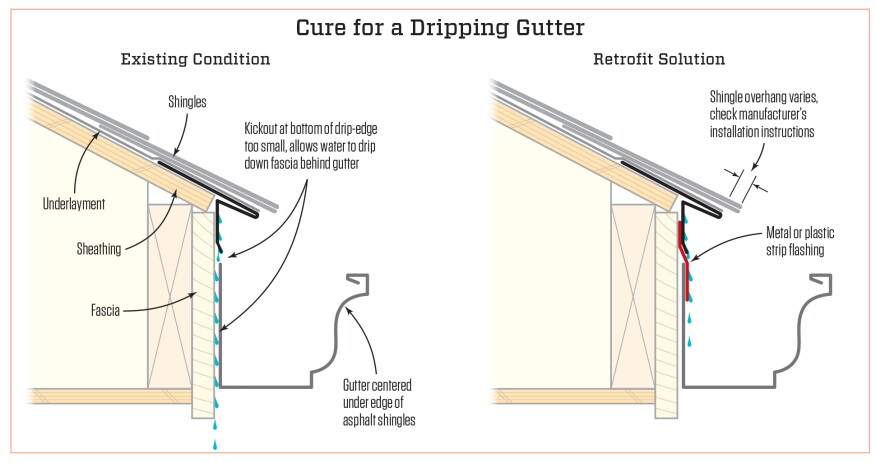With the new flashing in place the water runs down the roof and into the kick out flashing with diverts the water into the gutter instead of just running of the edge of the roof.
Retrofit kickout gutter.
The kick out flashing should slide up under the existing shingles for at least 8 inches.
If the kick out flashing is missing or inadequate remove and replace it.
Without a kickout flashing the water misses the gutter and runs in behind the siding and gets trapped inside the wall.
The image on the left shows what must be done to retrofit kickout flashings into a hard coat stucco system.
Otherwise water can seep into the wall below the gutter.
The roof to wall junctions below are typical examples it was possible to predict that significant damage would likely be present based on absence of correct.
Without a kickout water will eventually get behind the siding and into the wall where it will wreak havoc for years before you notice any signs of a leak.
We usually begin by installing a piece of peel and stick flashing folding it into the corner between the roof and the wall.
It s placed over the membrane at the eave and bent to serve as a spout directing water into the gutter.
Protect your home from moisture with amerimax s kick out diverter.
At the end of the vertical sidewall the step flashing shall be turned out in a manner that directs water away from the wall and onto the roof and or gutter.
The minute or two it takes to create this detail has a pretty big return.
Inspect the walls around the kick out flashing for holes and for rot.
Kick out flashings at dormers and bays the low point of the junction of a dormer or bay with a roof is the classic location for water damage caused by a missing kick out flashing.
I have included a picture of a typical kick out flashing so you can get an.
The simplest solution is a kickout diverter flashing which serves as the bottom piece of metal step flashing.
Missing or incorrectly installed kickout flashings are often the source of major structural mold and rot damage.
Installing a kick out diverter at the bottom of flashing on a shingle roof.
The 2009 irc includes the following section.
Constructed with heavy duty galvanized steel with a white finish it is an essential part of protecting your home against water damage.
Installed where a wall meets your roof it will help to divert the water from the roof into your gutter and not down your wall.
A kickout diverter is not only best practice when flashing the eave edge to a wall it s code.





























